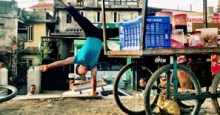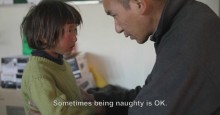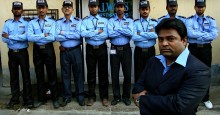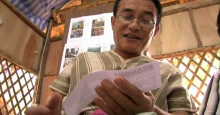A film by Sven Harding
South Africa is currently in the midst of one of the worst droughts to hit the region since the 1980s. Officials in the city of Durban have already begun water rationing for the city’s three million people and there are concerns Cape Town will have to do the same.
Yet ‘Place of Sweet Water’, produced and directed by award-winning filmmaker Sven Harding, suggests there could be another way to tackle the problem. This evocative short-fil documents Cape Town’s bountiful fresh water springs which run out of sight under the city centre and directly into the sea, being ‘wasted’ according to campaigner Caron Von Zeil, who narrates the film.
This film was funded by PMA WorldView and produced as part of a global sH2Orts film competition in partnership with international development charity WaterAid, with the aim of documenting the future of water.
Sven also won the first round of the sH2Orts competition in 2015 with his film Moonwalk.
Director’s Interview
PMA: Tell us a bit about your background. How did you get into filmmaking?
Sven Harding: I gained a degree in experimental filmmaking at Sheffield School of Art (subsequently part of Sheffield Hallam University). I exhibited my ‘video art’ globally after graduating, then I gradually moved into directing music videos, documentaries and TV commercials
How did you find out about your subject matter?
I went to a TEDxCapeTown event in 2014. I subsequently checked the event’s online archives and came across a 2011 TEDxCapeTown talk by Caron Von Zeil called ‘Reclaiming Camissa’, which was about her research and thoughts on once again utilising Cape Towns bountiful, but long-neglected freshwater springs. I then approached Caron with my idea for ‘Place of Sweet Waters’.
How does this filmmaking experience compare to other things you’ve made?
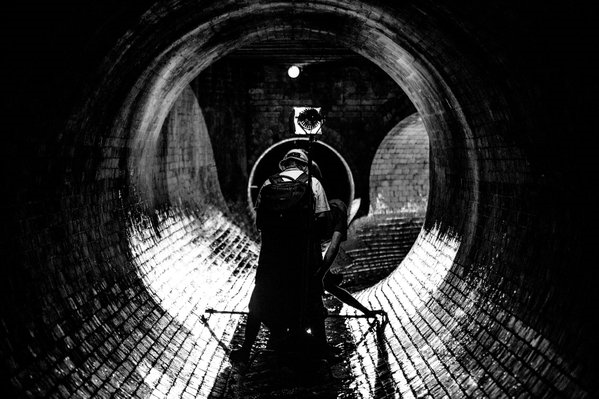 A lot of what we ended up shooting was in Table Mountain National park, and under barely accessible parts of Cape Town city centre, so there was a lot of ‘red tape’ to be waded through before we could get our cameras where we wanted them. There was also a lot of physical exertion is clambering up to the mountainside springs, and clambering down manholes, with a fair bit of film equipment. As it was a very low budget shoot, we had a very small crew, and everybody had to, almost literally, pull their weight. By the end of it we were all exhausted.
A lot of what we ended up shooting was in Table Mountain National park, and under barely accessible parts of Cape Town city centre, so there was a lot of ‘red tape’ to be waded through before we could get our cameras where we wanted them. There was also a lot of physical exertion is clambering up to the mountainside springs, and clambering down manholes, with a fair bit of film equipment. As it was a very low budget shoot, we had a very small crew, and everybody had to, almost literally, pull their weight. By the end of it we were all exhausted.
How did you go about getting access to the tunnels? – was it hard?
I contacted a couple of guys who occasionally take educational and tourist groups through the tunnels. There are many km of tunnels – most of them are very treacherous, due to the very slippery build-up on the tunnel floors from the fast flowing freshwater. It was mostly like walking on very slippery ice. We had to be super careful when we were in the tunnels.
How would you describe the tunnels?
They are roughly circular, made from very old brick, and mostly about 1.9m in height, so you can just about stand up in most of them. Other than the occasional pool of light from a manhole they are pitch black. Walking through the fast-moving water, on the slippery brickwork, carrying and using film and lighting equipment, with just a few head torches to light the way, needed a lot of concentration and coordination. Even though we only spent a couple of hours down there It was a huge relief to get back to the surface and daylight.
Why did you decide to film in black and white?
The choice to go with black and white was hugey influenced by the American photographer and environmentalist Ansel Adams, who is famous for his high-resolution back and white photographs of landscapes and mountain ranges in the West of the USA. I thought this kind of approach would work well with the shots of the mountainside springs. A lot of the archive shots I saw of the springs when they were last used as a source of freshwater were in black and white, which further reinforced this idea.
Why did you decide to go for the style you did?
Even though this is a factual environmental issue I wanted to further engage the audience by filling the screen with beautiful, poetic, evocative imagery. I wanted to use a lot of the stylistic devices I have evolved in my more experimental work to increase the recall for all those who see the film – hopefully helping to further spread the message and further raise awareness.
What was the main challenge you faced with the project and how did you overcome it?
As with any low budget project the main challenge is a lack of resources in terms of budget and manpower. Thankfully enough people were enthused enough about the project to donate their services and equipment for free – without all this immense kindness we would not have been able to make the film that we did.
Why this story and why now?
Cape Town, and most of the rest of South Africa, is currently experiencing its worst drought in more than 2 decades. The city is severely water-stressed, and yet this naturally occurring resource has been largely untapped, and wasted, for decades.
What are your hopes for this film?
I made a short documentary film for a commercial client last year that got over 14 million views on YouTube. I’m not expecting this film to reach that size of audience, but I hope that it might raise awareness to the point where some relatively simple, relatively cheap, positive action occurs in terms of city infrastructure, thereby quickly and tangibly improving the lives of millions of people.
What do you want to achieve in the future?
I love making films like this, and want to make more of them.
Biography
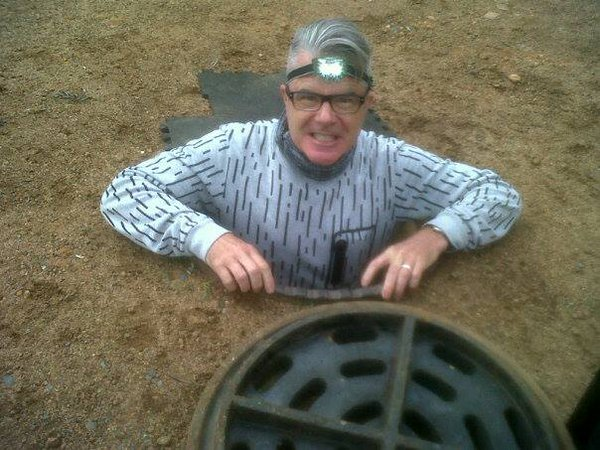 Sven is an award-winning director who looks at the world in a different way.
Sven is an award-winning director who looks at the world in a different way.
Be it his Greenpeace viral film that had the sun shining out of people’s bottoms, the slow-burning takes of the much-lauded ‘Saving Aslan’ documentary, hisWaterAid campaign film that almost exclusively focussed on a young girl’s feet, or the low-level perpetual motion of the ‘Still Running’ study of a disabled triathlete, Sven constantly draws upon his art school and music video background to find a fresh perspective.
Whilst he excels at both telling stories, and promoting causes, with his emotive and poetic visual style, Sven also has a peculiar talent for effortlessly directing choreographed musicals – and vividly capturing kinetic movement – for the small screen.
Head to Sven’s website for more information about his awards and previous filmmaking.
